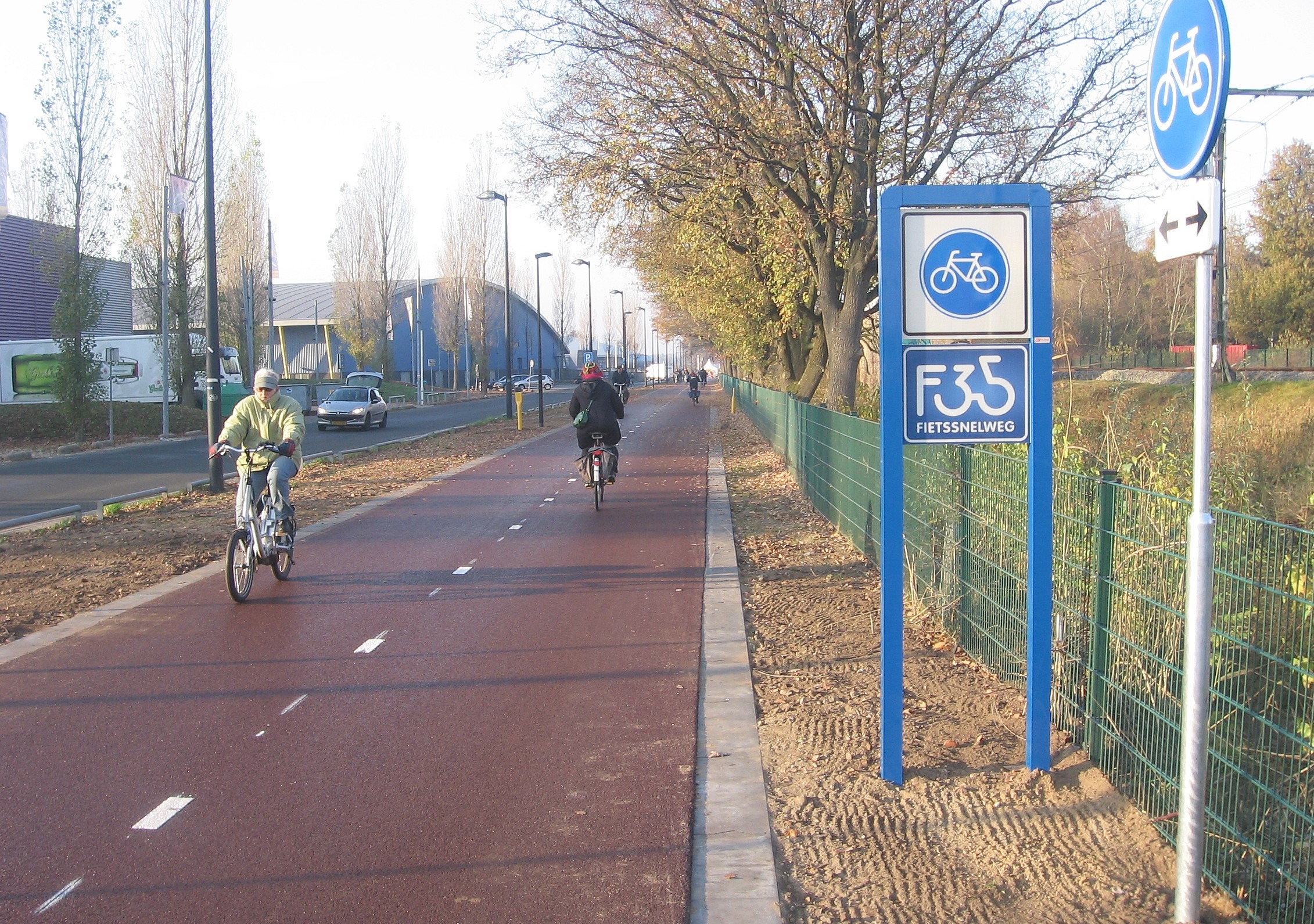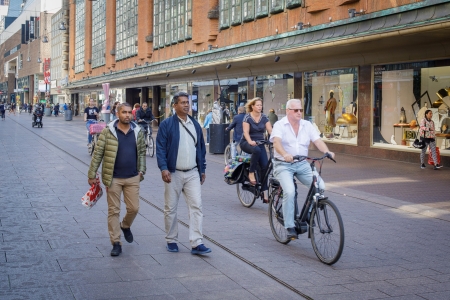Solid conclusions about the road safety of bicycle highways and bicycle streets cannot yet be drawn. A bicycle highway, called a ‘fast cycle route’ in the Design Guide for Bicycle Traffic, is a regional main itinerary designed to the highest standards to accommodate long-distance bicycle trips [4], see Figure 9 for an example. A bicycle street combines two functions: a through-function for cyclists (main cycle route, fast cycle route) and an access function for drivers [5]. See Figure 10 for example.
In bicycle streets, a road sign may emphasise that motor vehicles should behave as ‘guests’, but both bicycle street and road sign have no legal status, see CROW-Fietsberaad [5] for more design recommendations. A fast cycle route may be a bicycle street, a solitary bicycle track or a bicycle lane along a carriageway. They may be realised in such different ways that their correlation to road safety is impossible to ascertain conclusively. For bicycle streets, this goes to a lesser extent, since they can have one or two strips and, if required, speed reduction and traffic circulation measures to restrict the number of motor vehicles.
In the Netherlands, there is no crash research available to determine the safety of bicycle streets. In 2017, CROW-Fietsberaad conducted observational research in 11 streets, counting 6,600 encounters with motor vehicles in 33 hours. No near-crashes occurred. About 5% of the encounters were classified as troublesome or dangerous, particularly tailgating a cyclist was rather frequent [5]. According to Mansvelder, Delbressine and Dijkstra [35] characteristics such as priority for bicycle street traffic and the use of asphalt are incompatible with the Sustainable Safety vision of residential areas, see SWOV fact sheet 30 km/h zones. In eight of the bicycle streets studied by Delbressine [36] a large proportion of drivers exceeded the 30km/h-speed limit.
The road safety effects of bicycle streets should also be considered at network level. Cyclists can pass through residential areas via bicycle streets instead of going round them along distributor roads. This is also known as ‘unbundling of the car and bicycle network’ [4]. Cities where cyclists pass through residential areas and less often along distributor roads prove to be safer for cyclists, but in reaching this conclusion, use of bicycle streets was not explicitly explored [15] [37].
 Figure 9. Example bicycle highway (Photograph: Fietsberaad).
Figure 9. Example bicycle highway (Photograph: Fietsberaad).
 Figure 10. Example bicycle street (Photograph: Paul Voorham).
Figure 10. Example bicycle street (Photograph: Paul Voorham).
